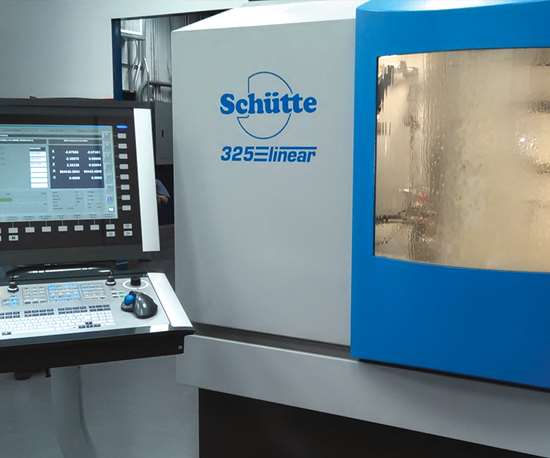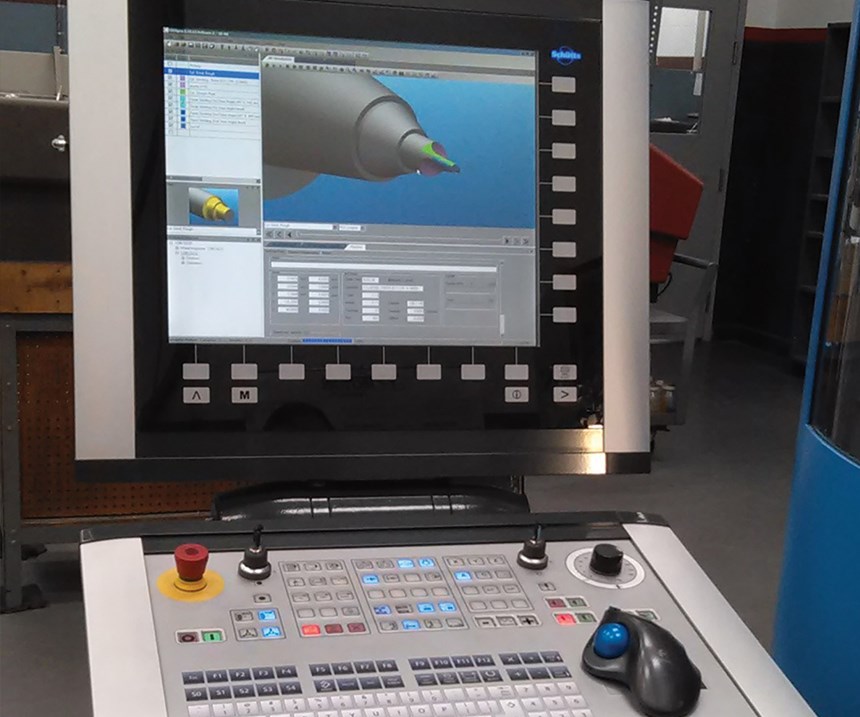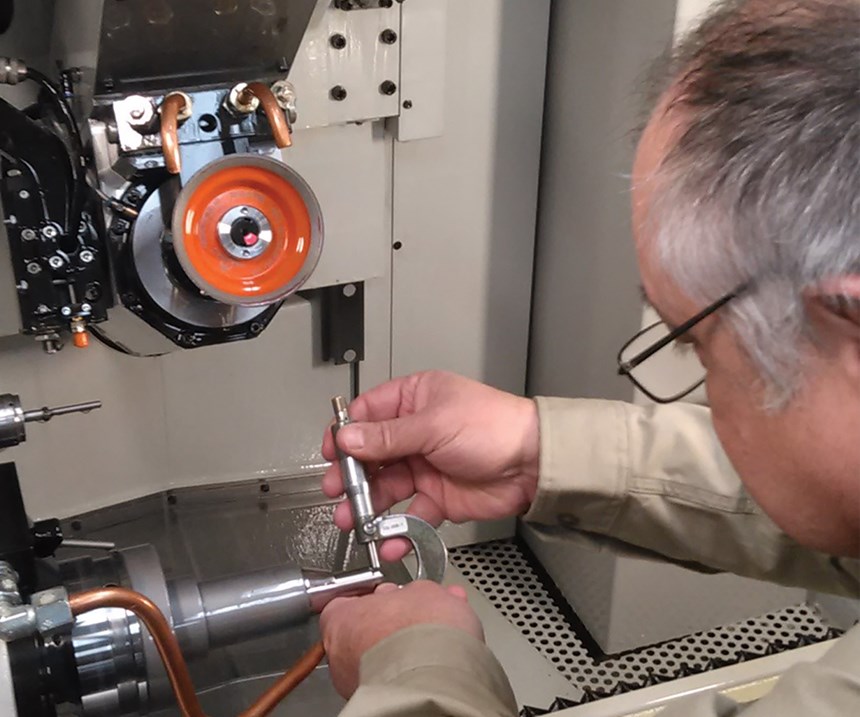Specialized Grinder and Software Speeds Part Production
Once the company implemented a new grinder, it not only saved time during setup, but it improved machine uptime and eliminated the need to purchase additional simulation software.
Edited by Lori Beckman
Finding new ways to perform processes in a shop is necessary to run a successful business. If one particular process is time consuming, it’s always a smart business decision to look into other options. Crowley Tool Co. (Hendersonville, Tennessee) did that with its grinding process since its setup times on its grinding machine were slow. Once the company implemented a new grinder, it not only saved time during setup, but it improved machine uptime and eliminated the need to purchase additional simulation software.
The story starts at the Precision Machine Technology Show (PMTS) in Columbus, Ohio, about 10 years ago, when company president Ed Crowley saw a Schütte grinder that had many features he knew would make a difference for the company’s operation. But because of budget limitations at that time, Mr. Crowley was not able to purchase a new machine. However, he heard from one of the sales and support specialists at Schütte that a used 325linear grinder was available, so the company bought it.
Featured Content
After some training and familiarization with the machine, Crowley’s Eddie Boland, an experienced machinist, was pleased with the service from Schütte as well as the machine’s performance. “When we had any issues with the mechanical side of the machine, a Schütte specialist was there to help,” he says. “Likewise, when software questions arose, Scott Topa, Schütte software and programming specialist, was there with the answers. They were able to resolve everything for us, and that kept us productive. The machine made a difference in our grinding operations almost immediately.”
Crowley Tool specializes in the design and manufacture of custom insertable form tools for multi- and single-spindle screw machines. For OD work, the company produces a line of quick-change form and shave tooling systems in dovetail, circular, flat form and modular configurations. For ID work, it manufactures either HSS, solid carbide or insertable versions of recess tools, multi-flute reamers and counterbores along with some aluminum alloys.
Past grinding operations at Crowley Tool involved individual flutings, with a lot of handwork and setup. “Because so much of our work is unique, with maybe 20 pieces being a big order for us, we spend considerable time with fixturing,” Mr. Crowley says.
But with Schütte’s software, all the cuts are included in the program, allowing the same chucking to be used for a family of tools, which leads to less setup and fixturing for the operator.
The virtual running ability, either on-screen or offline on a PC, is another feature on the machine that Mr. Boland appreciates. “This gives us the flexibility to test new machining approaches without tying up the machine, plus all rake angles, preset and offset values, can be adjusted on the fly.”
On the new machine, the 3D simulation on the SIGSpro software, designed for modular flexibility, offers Mr. Boland a simple Windows-based menu and on-screen simulation of the cutting path, which can also be run offline on a PC.
SIGSpro is a graphical user interface, and Schütte provides all the offsets automatically, when programs are slightly altered to produce a dedicated and matched tool set or family of parts.
Remote diagnostic capability on the CNC gives the Schütte team the ability to “see” inside the machine during operation to gage performance, resolve issues in-process and make suggestions to the operator on how a particular cutting sequence might be improved. “Schütte specialists can take my suggestion, implement it into the software and literally re-program the machine,” Mr. Boland says. “I can also send them a 2D PDF electronically, and the change can be made almost immediately. What a difference that’s made in our productivity.”
The Schütte 325linear grinding machine has two auxiliary slides with a large machining area of 400 mm × 250 mm × 250 mm (XYZ) and five-axis dynamics. At Crowley Tool, the machine is used for the production of material removal tools, so the precision of the rake angles, for example, is paramount. The software allows an on-screen 3D simulation of the entire cutting sequence, showing the distance from the cut edge or rake angle as a colored value on the simulated tool, so the proper grinding wheels can be selected more easily, depending on the material surface and appropriate geometry. The cycle simulation also anticipates possible collisions with the tool guidance system or other moving machine parts.
“We run some complex fluting patterns with ID/OD relief and stepped configurations,” Mr. Crowley says. “Often, our customers require three, six and 12 set packages. As a lot of our customers are doing automotive, defense, aircraft, valve stem, connector, transmission and specialized fitting work, they have exceedingly high quality expectations, and so do we. In the last few years, we’ve started to run the new machine on a network where we can back up all the production data for our customers as well as our own quality control.”
As Mr. Crowley further explains, these requirements put the shop on some new paths with its tracking protocols, and he says the team at Schütte are very helpful with assisting Crowley Tool in that process.
“The purchase of this Schütte grinder was a major capital investment for our shop, and it’s made a significant improvement in our operation. You could say it’s changed the face of Crowley Tool,” he says.
For more information from Crowley Tool Co., call 615-824-5594 or visit crowleytool.com.
RELATED CONTENT
-
Keeping Current with the Medical Machining Market
The medical machining industry being supplied by the precision machined parts industry is changing. This Northeast Ohio shop is working to keep up with the need to serve changing requirements of its medical customers by increasing the shop’s operational capabilities.
-
Grinding on a Swiss
This shop owner has developed a unique, and effective, approach to delivering a burr-free, tight-tolerance part.
-
5 Grinding Considerations for Improving Surface Finish
Improving surface finish can be done by making adjustments to one or more of these points: operational parameters, wheel dressing, grit size, coolant delivery and machine condition.









